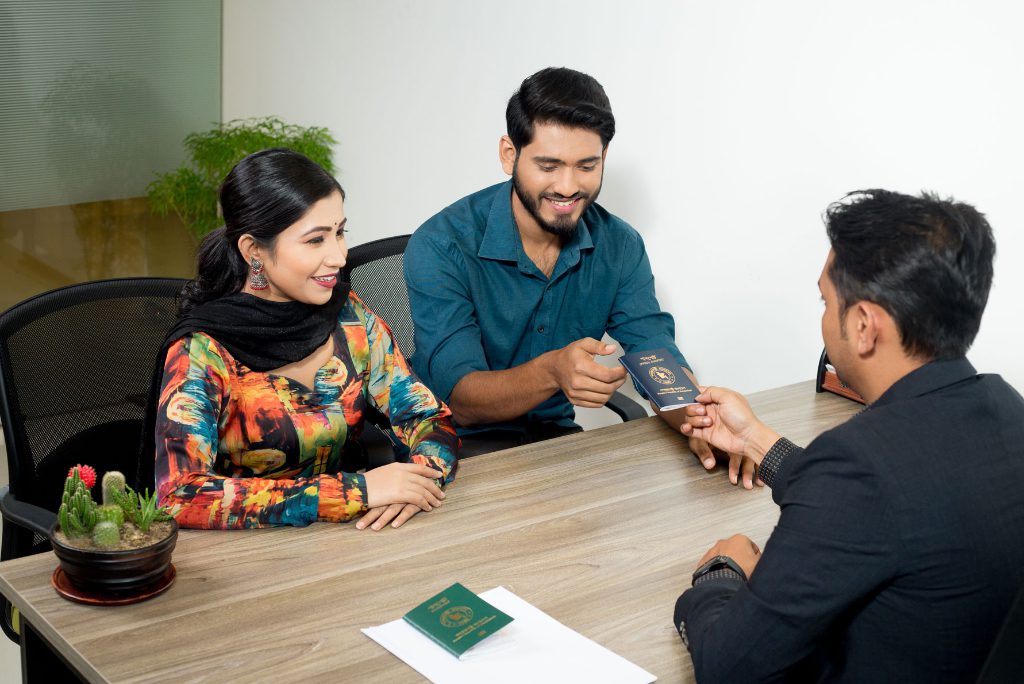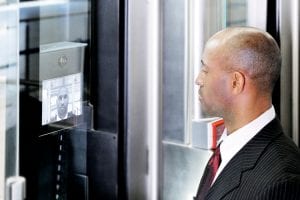Skift Take
Many border security agencies aren't ready to cope with a return to pre-pandemic levels of travel if they have to track additional pieces of information like traveler health. Blame the holdup on a debate about tactics and tech, not just budgetary shortfalls.
The pandemic has drawn governments worldwide’ attention to the need to track the visitors crossing their borders for more than immigration and security reasons. Yet many governments have decades-old technology and lack the flexibility to ingest new data sources such as medical information. Many nations also lack the latest techniques for verifying people’s identities.
One factor holding up progress has been a delay in agreement on the best standards to put in place. Questions abound.
Should border control agencies identify people using a thermal infrared image, which analyzes a face’s heat-signature for a pattern for recognition? This technology might work well in low-light conditions like a land border at dusk, but objects like eyeglasses might throw off sensors at a drive-through checkpoint, one report noted.
Is it best to capture standard photos of faces, given that countries worldwide of all sizes can afford and access technologies to analyze and manage such imagery? Or is it more thorough for governments to capture and store three-dimensional images?
Is it better to study the pattern of finger veins beneath the skin’s surface because they’re difficult to fake? Is it worthwhile to focus on “anthropometrics,” or the patterns of a skeleton’s joint positions? Can any given machine successfully catch attempts to fool it by “spoofing” tricks, such as wearing a contact lens over an eye in front of an iris scanner?
Authorities have been testing the different technologies, studying the quality of the equipment vendors are selling, creating standards for routinely testing the equipment’s accuracy, and figuring out the complex practicalities of budget, resource, and traveler adoption of new and unfamiliar systems.
One company that has tracked this multi-faceted problem is German tech player Veridos, which is partly owned by German state printer Bundesdruckerei. Veridos has been providing integrated identity solutions in the European Union and in countries such as Haiti, Luxembourg, and Bangladesh.
“There is a tendency across the globe among countries wanting to gain more time to identify a traveler before the traveler is really standing in front of the last line of defense,” Michael Brandau, senior product manager, verification systems at Veridos.
On the one hand, Veridos helps governments provide identity documents like passports. On the other hand, the company provides tools to verify those identity documents. Like other vendors, it has been working to modernize both sides of the equation.
“In the context of border control, new data sources are the focus of interest for many countries, starting with the so-called API, or advanced passenger information, which is more or less the kind of passenger list that is provided by the airlines,” Brandau said. “Passenger name records and other data are created much earlier, at the time a passenger books a trip, and more detailed.”
Currently Veridos is leading a project funded by the European Union called D4Fly, which aims to augment the ability of border control officials to spot fraudulent identity documents and identities on the fly.
A bunch of universities, tech vendors, research institutes, and border control authorities are testing how governments might deploy cutting-edge technologies. The overall goal is to split passengers up into two broad groups of low-risk and high-risk.
“You have some self-selecting travelers, who have a very nice user experience, but also the border guards themselves have more time focusing on the high-risk travelers,” said Susanne Kränkl, product manager innovations and business development at Veridos.
The D4Fly effort followed on PROTECT, a project for exploring identity verification on the move with additional biometrics, and FastPass. The goal in FastPass was to develop a harmonized, modern concept for automated border control in Europe.
Veridos examined the issues from the role of a platform provider, working with a couple dozen other partners. The project generated best practices for automating many processes, along with results from a related study of automated biometrics border control solutions.
A Possible New Future for Border Control
So where is the future pointing? One example is in a new border control solution Veridos has first deployed in Morocco, which comes with the company’s most modern software infrastructure to date. It makes secure the data replication between 26 locations with a total of about 1,000 border control workstations, the company said.
Veridos went on to apply the lessons of the FastPass project with a system installation at Luxembourg’s airport, installing ten automated border control gates. In Bangladesh, they helped border control agencies update their equipment to handle both new paper and new electronic passports with machines that can read the new e-passes. That project is still ongoing.
Many companies have offered solutions, with an abbreviated list including Amadeus, Clear, NEC, SITA, Idemia, Innovative Travel Solutions (ITS), Leonardo, Bartington Instruments, ReadID, Susteen, and Vision-Box. Companies like Airside and Travizory are attempting to build informational layers over top these solutions for managing foreign visitor data.
Europe still hasn’t decided on the contours of its next-generation automated border control. But Veridos sees one likely direction.
“One idea is to use the smartphone as a token where biographic and biometric data are securely stored,” Kränkl said. “When you have reached a border crossing, you don’t have to show the passport anymore. You just need your smartphone and all necessary data are transmitted directly from your smartphone to the border control station.”
In a summer 2019 project in London, Veridos tested PROTECT at the Eurostar rail station by using a combination of technologies. The effect was similar, if less glamorous, than the security corridor the Arnold Schwarzenegger character walks through in the movie Total Recall.
Any single security solution may be like “Swiss cheese,” with some holes in it that bad actors can exploit. The notion is to mesh several security efforts together, which may provide a tighter net. On the one hand, the cost could be prohibitive to use all of these technologies. On the other, the world would avoid becoming too dependent on any one solution.
“You basically just walk through a corridor and seamlessly all your biometric modalities, like your iris scan, like your facial pattern, and so on, are captured and used together,” Kränkl said. “You will have multiple sources confirm the identity of a person…. We already got positive feedback from the stakeholders on the concept.”
UPDATE: This article has been updated to note that the D4Fly effort is still ongoing, and to remove an incorrect reference to a project coordinator.
The Daily Newsletter
Our daily coverage of the global travel industry. Written by editors and analysts from across Skift’s brands.
Have a confidential tip for Skift? Get in touch
Tags: airport security, biometrics, border enforcement, borders, security
Photo credit: A couple pre-pandemic gets new passport documents thanks to a Bangladesh identity solution partly powered by tech firm Veridos. Veridos

